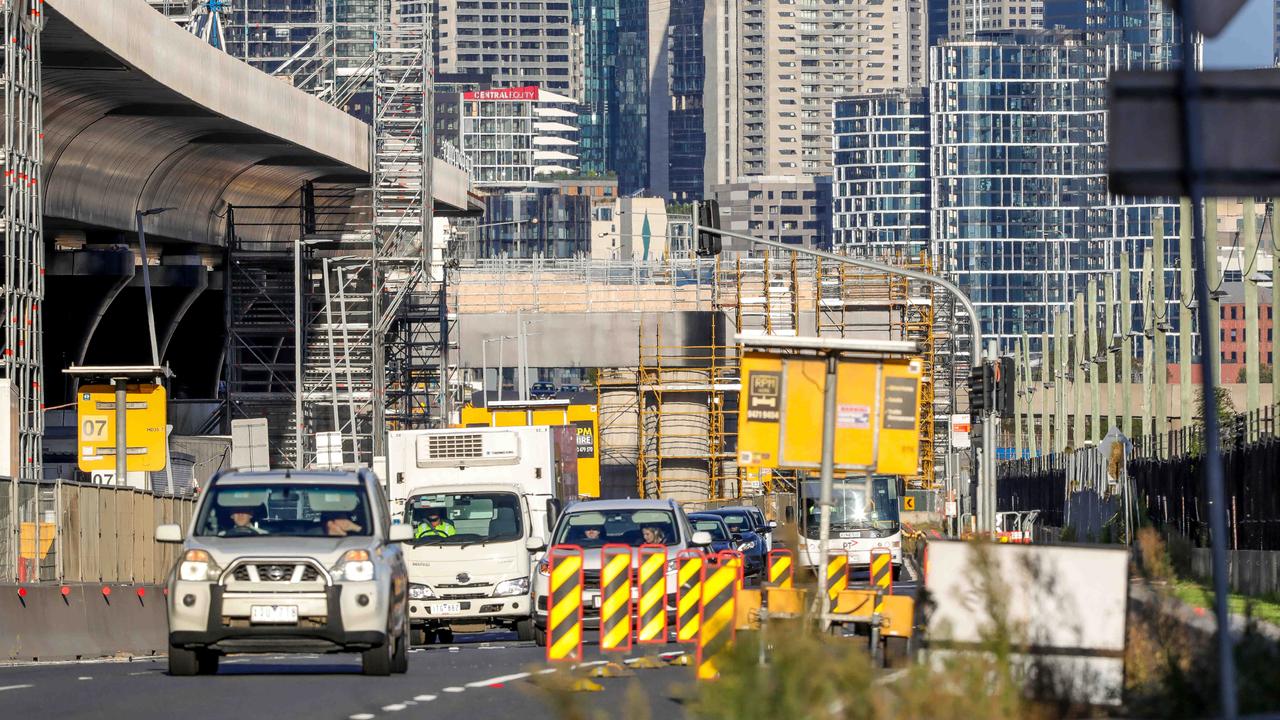Herald Sun head of sport Matthew Kitchin details his courageous ascent of Mt Everest
What's it really like to climb Mt Everest? As the death toll on the mountain rises, this first-hand account shows how perilous the journey to the world's highest peak can be.
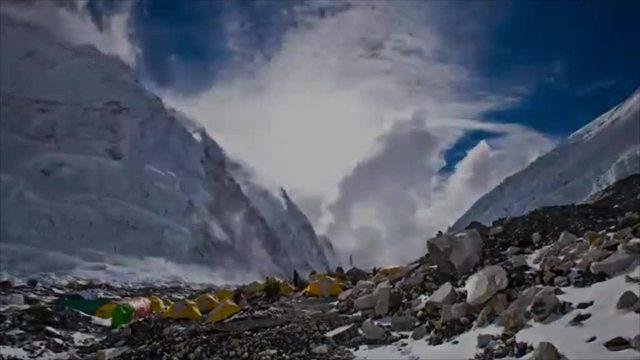
News
Don't miss out on the headlines from News . Followed categories will be added to My News.
In the wake of the death of an American climber and the rescue of an Australian man near the peak of Mt Everest, we re-visit a first person piece by the Herald Sun's head of sport Matt Kitchin about how he survived a near-fatal trek to the world's highest peak.
Descending through the mainly deserted tents at Camp 2 on the north side of Everest, I am gripped by an urgent desire to drop in the snow and rest.
The campsite sits uncomfortably on a rib of snow-covered rocky ledges at 7500m.
I’m instantly out of breath and confused.
Only 30 minutes earlier, climbing down alone from Camp 3 at 8100m I find an Indian climber lying in the snow.
He clearly needs help.
THE MADNESS NEAR MT EVEREST’S PEAK
FOLLOWING FAME TO THE HEIGHTS OF EVEREST
Feeling strong after summiting Everest earlier that day, I coax him into a safe sitting position and clip him into the safety rope.
He declines the offer of a hot drink and food, saying he just wants reach Camp 2 where he has support.
He has lost power on the summit bid, can’t reach the top and is attempting to lose altitude as quickly as possible to stay alive. He has lost contact with his team.

Plenty of high-altitude climbers succumb to that inner calling, take the weight off their feet, slip into a blissful sleep and freeze to death.
I had climbed past a tragic reminder of that fateful decision only eight hours earlier that day.
A climber’s face rested on his hands in a peaceful eternal slumber, his body entombed in ice at 8700m. He died two years ago.
It is vital this Indian climber gets down as quickly as possible before his becomes a perilous situation.
Unsteady in his crampons and clumsily clipping into the safety line, we finally make it to Camp 2 and he falls exhausted into a tent.
Adding to the time I have already chewed up enjoying the views I will never see again, I’m now behind schedule and resume my descent alone to Camp 1 (7050m).
A sudden wave of fatigue and nausea sweeps through me.
Nearly through the string of tents at Camp 2, my legs refuse to obey and I can’t suck in enough oxygen to get moving.
Something has gone dramatically wrong.
I want to sit down, but know the risks and fight the urge.

A Chinese climber appears and I point to the regulator on the oxygen tank.
She says: “Nothing. No Oxygen. Empty.”
I have run out of gas with a 500m vertical descent to reach the safety of Camp 1.
Luckily I’m low on the mountain. A person plonked on Everest’s summit without oxygen would be comatose within a couple of minutes and die.
In a mild brain fog, I can’t recall where our stash of spare oxygen bottles is hidden at Camp 2, much less summon the energy to climb back uphill to search for it.
I had left Camp 3 ahead of my climbing partner Lhakpa at 3pm and I wait a while for him to catch up and help out.
But a communication breakdown means he never arrives.
It’s critical I act quickly. I pull out my mobile, which weirdly has a skerrick of China Mobile reception and 2 per cent battery.
I send a message to an expedition outfitter I know in Kathmandu, explaining I’m out of oxygen and to contact my team leader who has a radio.
He replies by text, but not before my phone goes dead. It’s 6pm.

THE only option is climb down slowly and make no mistakes.
I pass a couple more Chinese climbers heading up to Camp 2 — stragglers on their way up to prepare for a summit push the following day.
They understand my predicament and wish me luck in broken English.
At 11pm, 25 hours after starting the summit bid, I reach Camp 1 shattered; I find an empty tent, slip into a sleeping bag and the sleep of the dead.
Early the following morning — Day 5 of our summit attempt — I search the tent for food, stove and butane gas, but there’s nothing.
I cadge a cup of hot green tea from some Russians and rappel from Camp 1 down to the glacier below.
All I crave is a can of Coke. I’m fixated. Thirsty. Tired. Hungry. So depleted of energy, I stop every 10 minutes to rest and then urge myself on.
At a massive Chinese campsite at Advanced Base Camp, between Camp 1 and my base camp destination, I stop for another drink, a round of congratulations and perk up for my final stretch.
I arrive to an agitated expedition leader Dendi and Japanese teammate Keiji, who is using bottled oxygen to recover.
Coke, hot tea, and food is produced and the revival begins.
No one has seen or heard from Lhakpa.

He rolls into camp later that afternoon, none the wiser, to a frosty reception. The plan had been to make our way to ABC together, but Lhakpa had thought I’d been moving strongly enough to make my way alone. He had made a snap decision to sleep at Camp 2 with a spare bottle of oxygen.
Everest from the Tibetan, or north side, is a change of scene after my attempt on the peak from Nepal in 2005.
My team missed out that year after a pretty tough trip, including an avalanche that killed a couple of climbers and wiped out our Camp 1 (6100m).
An ice cliff more than 1km above the campsite on the Western Cwm shed a load for the first time in 40 years and laid waste to everything in its path.
As the ice fell, it displaced a wall of air that bowled over tents, equipment and people before the ice buried everything.
Our team slept in those tents the previous night and we heard the roaring avalanche from the safety of Camp 2.
The only evidence of our Camp 1 when we descended were yellow flaps of tent poking out of the debris.
Nonetheless, we retooled and kept up the work of acclimatising, spending a night at 7300m without oxygen ready for a summit push. And then we waited for a weather window.
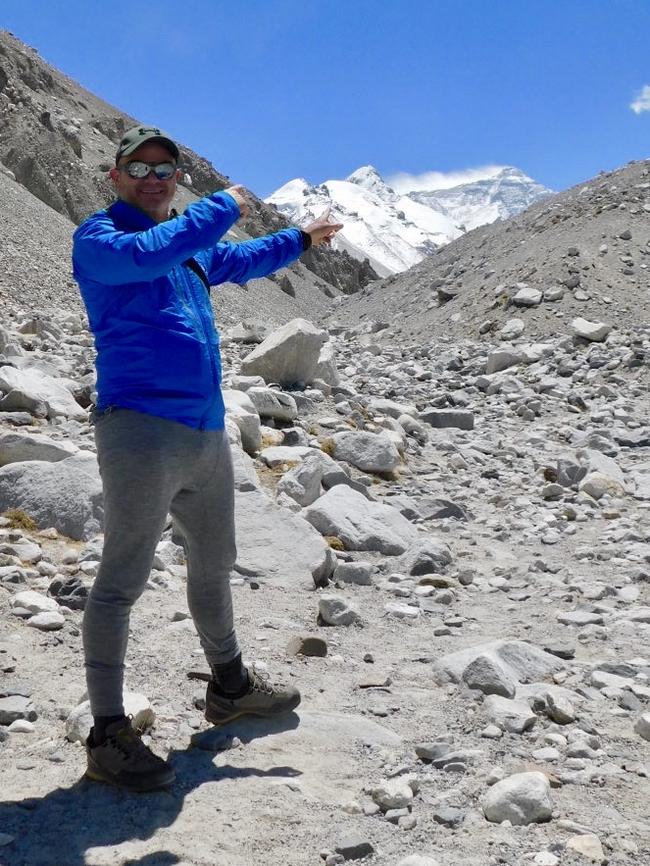
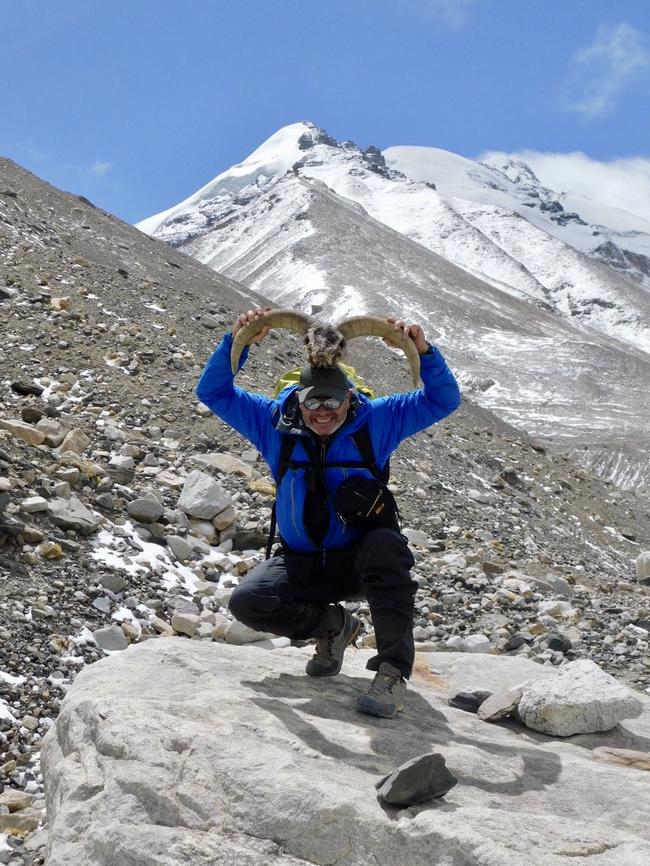
But good weather — when the jet stream moves off the summit for a few days every May — never arrived in our time frame.
A lot of teams failed that year.
Mountaineers often claim the “journey” is most important and the top is a bonus.
I may have falsely used those words myself, but it’s a crock.
Never have I been so gutted as the moment our expedition leader said: “We’re going down.”
Decamping and carrying massive loads down through the violent and chaotic Khumbu Icefall — which has claimed 50 lives, including one while we are there — is a feeling I can’t forget.
Motivation comes in many forms; this is mine. It will eat away at me until I return to “knock the bugger off” as New Zealander Sir Edmund Hillary and Sherpa Tenzing Norgay did first in May, 1953.
Thirteen years later, I am prepared.
In those intervening climbing seasons, I climb Ama Dablam (6812m) and the rarely summited Cholatse (6440m), both dramatic and ominous mountains that trekkers pass on the 10-day hike to reach Everest Base Camp on the Nepal side.
Cholatse is a New Zealand-led expedition that might be only the second summit by a team from that country. Records are dodgy at best.
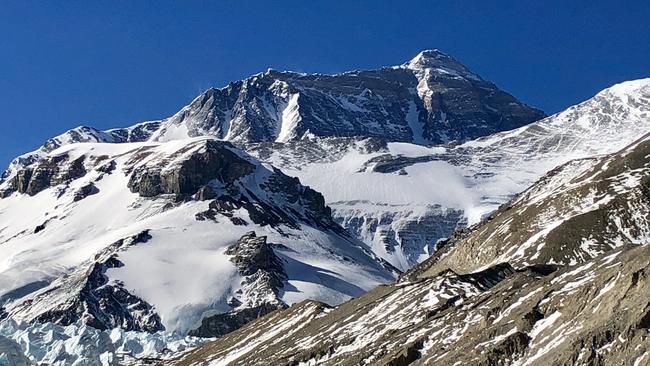
It’s a difficult proposition, mainly because the bergschrund — where the glacier butts up against the mountain — is often impassable.
We originally plan to attempt the north ridge, but avalanches make it completely unsafe, instead taking a high pass to the south side where we climb without incident.
A team of three South Koreans who boldly remain to attempt the north ridge are avalanched off. Their decapitated and disembowelled bodies are found hundreds of metres below their highest point on the climb.
I learn steep ice-climbing in the intervening years, with face climbs in New Zealand and frozen waterfalls in Iran.
Alpine rock climbing the granite spires of the Canadian Bugaboos, numerous peaks in New Zealand and weekends on the rock with my wife Claire at Mt Arapiles in the Wimmera — all with a weather eye on Everest.
None of Everest’s climbing problems will faze me, I’ll be self-sufficient on the mountain, and I will help fellow climbers if the blizzard hits the fan.
In the middle of 2017, I negotiate with Claire, and commit to go back.
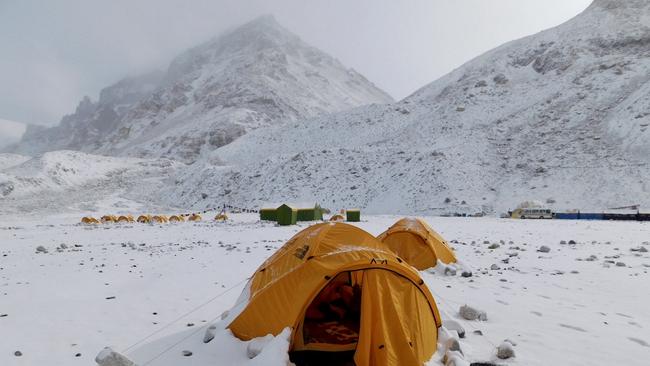
Conditioning at sea level for a climb to 8850m is never easy.
Hitting the Herald Sun emergency stairwell with four 5kg sacks of basmati rice in a backpack is one solution.
Slowly repeating the 535 stairs for more than an hour a few times a week is close to mimicking the pace of high-altitude climbing.
A heavy program of deadlifting and squats with my unyielding trainer Gabriel D’Angelo, plus long bike rides and hikes, adds endurance.
A week of climbing in New Zealand at the start of the year gets the footwork and lungs humming in the mountains.
I’m ready for Everest again.
Climbing it from Tibet is a vastly different proposition to Nepal.
A geological upthrust — the convergence of the Indian tectonic plate and the Eurasian Plate — has created the Himalayas.
The line of steep ice-covered peaks in Nepal, whose glacial melt cuts deep valleys, is in huge contrast to the almost lifeless Tibetan Plateau on the other side of the range in China.
Imagine pushing your fist through sand at the beach. A ridge of sand rises up sharply around your hand and then spills gently away. That’s what happens on a monumental scale in the Himalayas.

I TEAM up with three Japanese and two Nepali fellas, who are good company.
The Japanese — Keiji, Hiraoka and Ichiro — need a fourth climber to satisfy the strict Chinese multi-person entry and climbing visas.
They speak little or no English and my Japanese is non-existent.
Google Translator gets a massive work out with some amusing mix-ups.
We meet in Nepal and drive the shocking road from Kathmandu to the Chinese border, taking one and a-half days to cover 120km.
Unmade and broken, with huge drop offs, keeps the speed as low as 5kmh and we’re forced to back up to let trucks pass on the narrowest sections.
The border crossing on the Nepal side is third world. A trestle table for bag searches, chickens on the stairs of the immigration office and heavy police and army presence.
Cross the 30m bridge to the Chinese border control and the building is a modern Stalinist monolith with perfectly paved roads and hi-tech surveillance equipment.
The contrast cannot be starker.
The Chinese military check cameras, phones, tablets, books and laptops for images of the Dalai Lama and our Japanese friends have plenty of devices.
Once in China we drive at high speed towards Everest Base Camp.
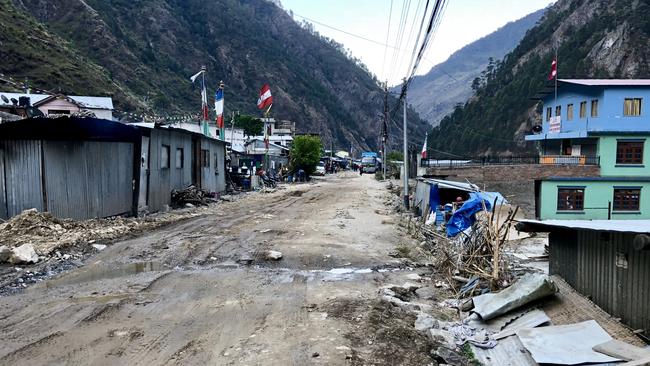
A HUGE rocky plain at the snout of the Rombuk Glacier is our home base at 5200m for the next month.
An enormous Chinese camp dominates one side and another commercial outfit with a space-age dome tent anchors the other flank.
One has a bar with a pool table and clients who fork out $US65,000 luxuriate in large tents with beds off the ground. Most of the climbers seem to be Russian, Polish or Chinese, though I meet Alyssa Azar, who becomes the youngest Australian to climb the mountain from both sides.
Our small camp is much more meagre.
My tent is comfortable with a foam mat on the ground.
Our cook and kitchen hand build a kitchen out of rocks with a marquee-style tent over the top.
They will cook Japanese food for us every day we’re in camp.
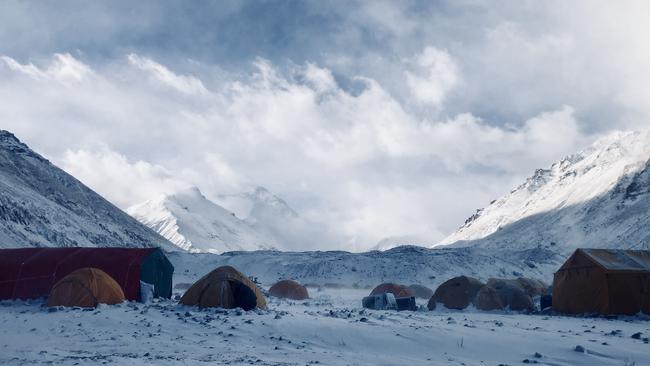
The mess tent has picnic tables and chairs and synthetic grass on the ground.
We erect a tent over a squat toilet and a shower tent with a drip bucket that I use twice in my entire four weeks here.
Once we settle in, a Tibetan lama conducts a puja ceremony to keep the gods on side. It’s a magical morning of chanting and we string up prayer flags around the camp.
The Sherpa take this seriously, and it’s great to immerse in the culture, even if our lama takes a mobile call midway through his ritual.
Soon 40 yaks are loaded with our gear and sent ahead to Advanced Base Camp, where we set up a second home closer to the action.
AFTER three weeks acclimatising and setting up our high camps, we identify May 16 as a perfect summit day with clear skies and no wind forecast.
As we prepare, Everest suddenly emerges from behind the cloud and the enormous mass of rock stands us in awe.
We pick out the yellow band of rock above 8000m that millions of years ago was a seabed.
The jet stream whips a banner of spindrift off the summit. Those winds will blow a person off the top and the -40C wind cut frostbite into any exposed flesh.
We make out the summit route that follows an extended ridge line with three tricky rock “steps” above the Death Zone.

The advantage of climbing from the Chinese side is there is no Khumbu Icefall-equivalent to negotiate. The quid pro quo is climbers are exposed to danger on this ridge for a long time.
If the poop hits the fan, you’re up high for a long time before descending out of danger — and that fatally catches out plenty of climbers.
Working back from May 16, we need four days to reach the top.
I leave alone on a foul, cold day for the 16km grind from Base Camp to Advanced BC, following the Rombuk and East Rombuk glaciers.

The next day, high walls shelter our climb from ABC up an ice face to Camp 1 and the climbing is excellent.
DAY three starts in blazing sunshine but takes a nasty turn as a blizzard blowing from right to left slows the pace further as we grind our way up to Camp 2.
We are using supplemental oxygen at this point. I try to get into the rhythm of three laboured breaths per step.
Big down suits and mitts barely keep us warm enough, with particles of ice whipping our faces.
We are climbing by clipping Jumars to rope that is fixed to the ice and rock. The ascender will slide up, but teeth in the device grip the rope and prevent it sliding back down.
Just below our Camp 2 tents, Keiji is sitting under a rock out of the wind and says he wants to sleep. I urge him to drink hot water and frustratingly slowly we reach our tents.
Lhakpa, who cops frostbite on his cheek from the knifing wind, and I struggle to secure the tent and I dive inside to prevent it flying away. Soon we slip into our sleeping bags to warm up with a cup of tea and a boil-in-the-bag dinner.
The storm drives snow under one side of the tent, forcing us to fitfully sleep on an awkward angle. The wind gusts whack the tent down on top of our faces. The noise is horrendous.
The temperature dips to -30C.
AND then it’s morning and it’s silent. Not a breath of wind.
Today is game day.
THE STRANGE SILENCE OF EARTH’S HIGHEST POINT
THE next push to Camp 3 is in fine weather — a sign of great things to come.
A few awkward sections lead steeply through rock ledges and test our patience and strength.
Keiji and Dendi pass me when we reach a snow slope that rises up to Camp 3.
I tell Keiji: “Well done mate, going strong.” Later I discover he’s on full-flow oxygen, more than double my rate.
Ichiro loses power and Hiraoka advises him to descend quickly.
Hiraoka climbs on part of the way but ultimately sacrifices his summit bid to be with his mate.
About 20 bodies are buried in the snow at Camp 3. We don’t want to add to that tally.
We fuel up and rest from 3pm until our summit bid launches at 10pm.
It is bitterly cold — -40C — and perfectly still.
Torchlights bob in the dark and climbing equipment clinks metal on metal.
Sucking 2 litres-a-minute of gas helps, but it is an enormously hard climb.
I compartmentalise every section and enjoy each one’s unique character. Finish one small section, switch it off and start the next. It helps to dull the exhaustion and brutality of the climbing.
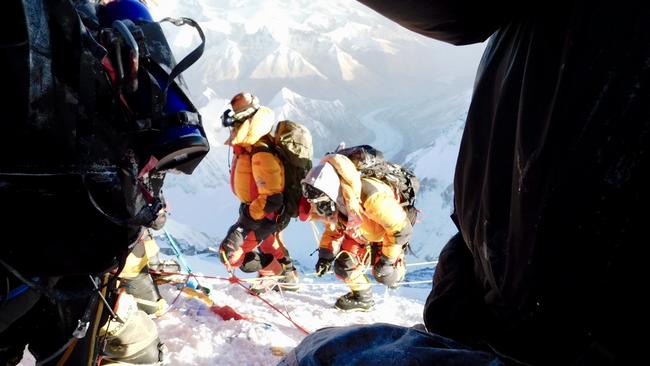
At 8500m, the oxygen systems for 10 climbers from another team fail. Their regulators that control oxygen flow are not working and there’s a scramble to share equipment and get climbers down. I’m ahead and miss the whole drama.
The three rock “steps” are not so much a technical challenge as a case of grunt work and being mistake-free — difficult in the pitch black while wearing big down suits and gloves, cumbersome boots and crampons.
The batteries in my head-torch start to fade and narrow my focus as we reach the infamous “second step” at 8600m.
This 40m wall is where George Mallory is famously thought to have come unstuck in the 1920s and fallen to his death.
The Chinese have somehow dragged an aluminium ladder up there, which creates a wobbly aid for part of the crux before an awkward exit at the top of the step.
AROUND 7am and a few metres below the summit, the most incredible sliver of blue sunrise fizzes along the curved horizon.
It’s here that the climber from two years ago lies frozen in a napping pose.
Ten climbers are 10 minutes ahead of me, and I lead a line of about eight more.
After a narrow traverse with a 3000m drop to our right, we climb a short rock face and arrive at the top of a short ramp of snow.
We are at 8850m — on top of the world. With a foot in Nepal and one in Tibet, I join a list of 70 Australians (and 50 Kiwis — I’m both) to have stood on the summit of Everest.
It’s a weird, giddy feeling not being able to look up and see a thing. The mind and body momentarily lose equilibrium.
Carefully sitting down, I chat to mates and other climbers for half an hour. We take pictures of each other, some with sponsors’ flags, and simply absorb the achievement.

Scanning the world below, every single peak, glacier, valley — anything — is dwarfed.
There are the peaks in Nepal I’ve previously climbed. They were monstrous adventures at the time, but from the Everest summit they are pimples on the landscape.
I snap a photo of the summit’s shadow reaching to the horizon.
At one point there’s a strange silence among the few people standing on Earth’s highest point.
No over-celebrating. A kind of calm mutual satisfaction.
Soon we have to get down safely. The descent is responsible for most of the deaths on the mountain. Some climbers burn all their energy on the way up.
Pulling into Camp 3, where I make a mobile call to family, with a raspy throat from bottled oxygen, our four-man team rests up with hot tea before preparing for the final descent to Advanced Base Camp.
Lhakpa suggests I go on ahead. Neither of us thinks to check my oxygen levels.
SEVEN people die on Everest this year. It raises the ethical debate about paying Sherpas to risk their lives so that Westerners (and Japanese in our case) can satisfy their adventurous whims.
Lhakpa, with whom I climbed, cops frostbite.
One Japanese climber from my team is evacuated to hospital before his summit push.
A Sherpa on our team is sent back early to hospital in Kathmandu with severe frostbite of an ear.
A European climber I befriend catches frostbite on his hands and has had fingers on the right hand amputated.
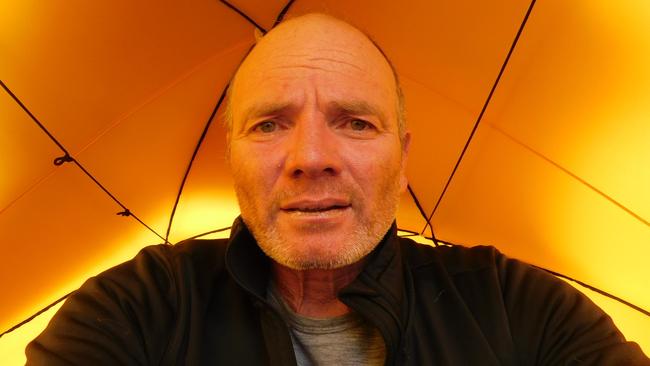
Some estimates are 40 per cent of climbers don’t make it because of cerebral oedema, respiratory issues, loss of physical power and loss of mental will.
The risks are often discussed but for climbers they are acknowledged, respected and to some extent blanked out.
The ethical question remains: is it fair for Sherpas to be lured by my money to take those risks?
Dendi, who speaks Japanese and specialises in running trips for them, lives in middle-class comfort in Kathmandu.
His modern, four-storey home, in a sought-after suburb above the smog of five million people crammed into the Kathmandu valley, has desirable views of the airport — a big tick for Dendi.
He employs five men, his children attend a top school and he often travels to Japan to spruik for work.
He has summited Everest 10 times. He is a passionate, strong and skilled mountaineer who constantly talks about peaks he wants to bag.
Dendi teams with Keiji, who struggles terribly with altitude on all of the acclimatisation rotations to 7050m. He is on bottled oxygen and nursed at every stage. He collapses at the end of grinding days that Everest climbers should manage with far less theatre.
Keiji has few climbing credentials — Kosciuszko and Kilimanjaro don’t rate a mention in climbing circles.

Close to being kicked off the expedition, Keiji tells Dendi if he’s sent home he expects a refund of the non-refundable $US35,000 fee he paid to be a private client.
Therein lies the dilemma.
I imagine Dendi can’t afford the bad press if Keiji returns to Japan and badmouths his fledgling company.
So Dendi leads Keiji to the summit, saying afterwards he can’t afford for him to die because it will kill his business.
Keiji is short-roped, cajoled and bullied to the top and down again. He does not carry any weight in his pack except for an oxygen tank.
MORE HERALD SUN NEWS
PICKEN’S KIDS WATCHED HIS HORROR CONCUSSION UNFOLD
NIKOLIC CREWMAN NARROWLY ESCAPED DRUG ARREST
SAM ARMYTAGE: ‘DON’T ATTACK ME FOR BEING BEAUTIFUL’
He uses 10 bottles of oxygen. I used four by comparison and carry all my gear.
I team with the resolute and blunt Lhapka for our summit push. We share loads, joke a lot in mangled English and look out for each other (until the descent snafu).
He also is mad about climbing and has joined an expedition to K2 in Pakistan this month.
Lhakpa and Dendi can opt out of the high-altitude stuff, but they choose to make that their life.
Keiji sooks at Base Camp and demands to leave before camp is broken down and with no respect to celebrating our amazing personal achievement with our Sherpa friends.
He offers to pay me to accompany him back to Kathmandu early, which I decline. No ethical dilemma for us; the Sherpas and I celebrate hard for four days.


